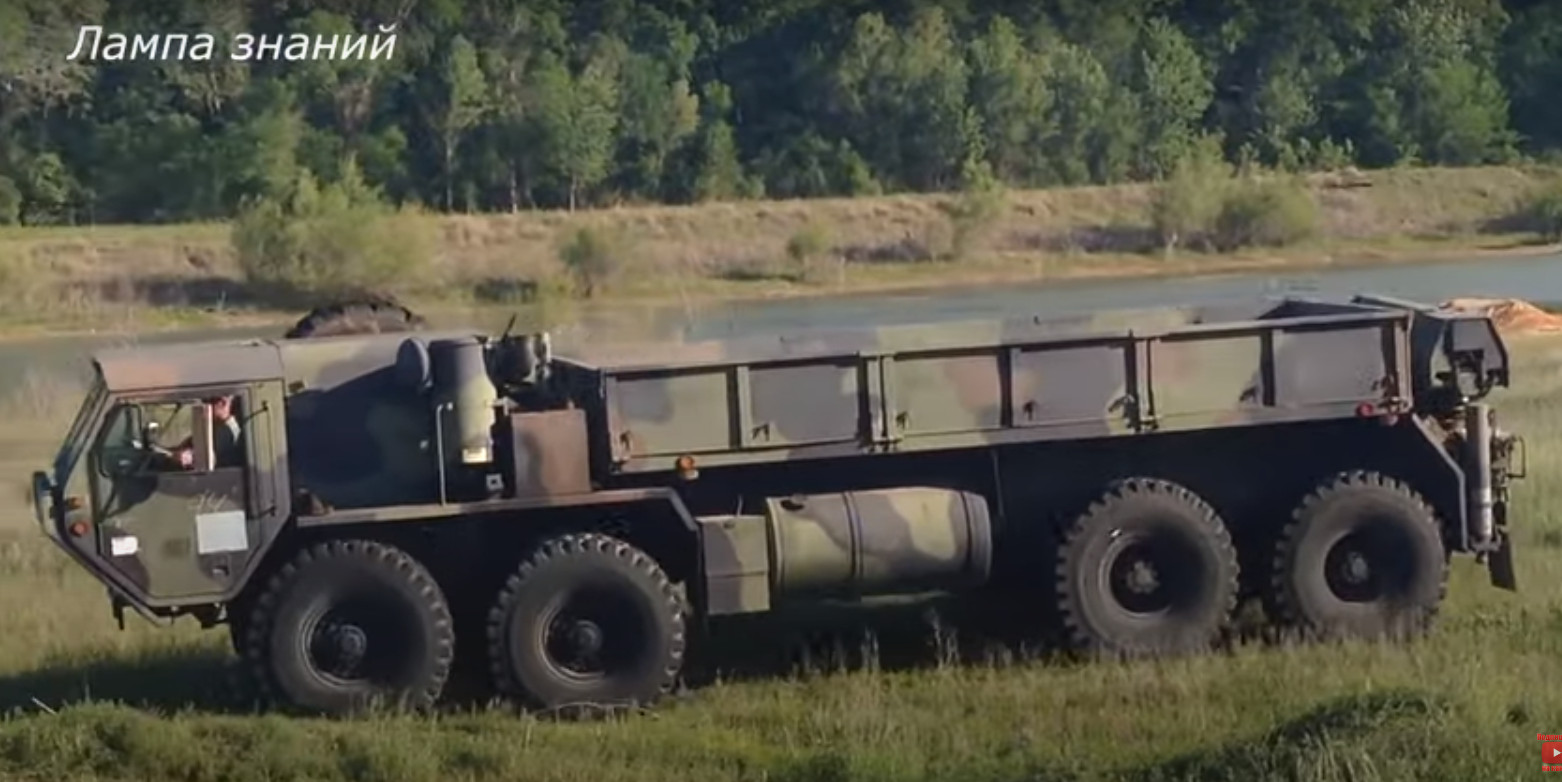
Date: 2025-10-05 Page is: DBtxt003.php txt00024805
THE UKRAINE WAR
MUCH SPECULATION ... LITTLE VALIDATED INFORMATION
DaulyKos: Quick Explainer: Russia Might be Screwed if Ukraine Advances Another 10 Miles
MUCH SPECULATION ... LITTLE VALIDATED INFORMATION
DaulyKos: Quick Explainer: Russia Might be Screwed if Ukraine Advances Another 10 Miles
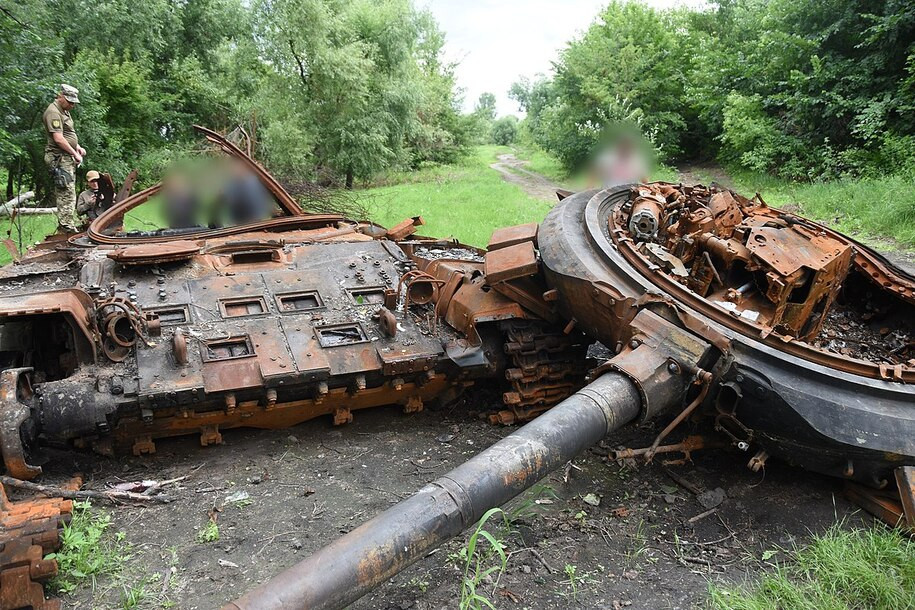
Destroyed russian T-72 obr 1989 in Chernihiv region
Original article: https://www.dailykos.com/stories/2023/6/16/2175741/-Quick-Explainer-Russia-Might-be-Screwed-if-Ukraine-Advances-Another-10-Miles
Peter Burgess COMMENTARY
Peter Burgess
It appears to have been a relatively quiet day and night on the Velyka Novosilka sector on June 14-15.
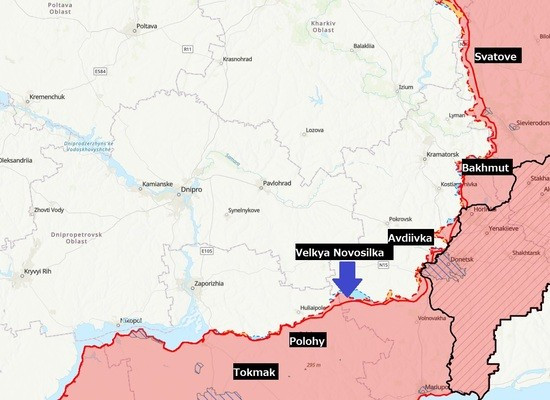
Earlier reports of the liberation of Urozhaine proved to be false. Fighting reportedly continued on the left and right flanks of the battlefield, but both Russian and Ukrainian sources didn’t mention any major clashes along the central Makarivka-Staromaiorsk or the Urozhaine sectors, although some Ukrainian probing attacks appear to have happened. A push by Ukraine towards Novodonetsk on the eastern side of the battlefield reportedly made marginal gains.

There can be a lot of reasons for a brief pause in offensives. The troops may have been tired and needed a rest. More artillery shells needed to be delivered to support the attack. Artillery was being repositioned further forwards. Mines may have needed to be removed from rearward sectors. Reinforcements needed to be positioned for a bigger assault. U kraine may have needed to conduct more reconnaissance of Russian defensive positions. From thousands of miles away, it’s virtually impossible to say with only open sources.
In any case, War Gonzo is reporting that night attacks resumed a few hours ago in the evening of June 15-16.
So for today, we’ll focus on the longer-term picture of what Ukraine might be trying to accomplish in the Velyka Novosilka offensive.
One of the most formidable things about fortified Russian defensive positions has been a combination of mines, helicopters, and artillery. Dense minefields slow down the Ukrainian advance and restrict mobility which is the great strength of Ukrainian mechanized forces.
Into this restricted movement, Ka-52 Alligators, Mi-28 Havocs and Mi-24 Hind attack helicopters are flying in for long-distance strikes from 5km or more away. This allows them to outrange most MANPADs (“man-portable air defenses”, or shoulder-launched anti-air missiles) like the Stinger missile (low altitude range: 4800m). Russian helicopters are exploiting a deficiency of Ukrainian SHORAD (Short Range Air Defense) resources to attack out of what’s known as an air defense “dead zone.”
SHORAD systems are generally highly mobile, lightly armored anti-aircraft platforms that are significantly less sophisticated and expensive than longer ranged SAM (surface to air missile) batteries. They are not designed to engage targets more than 5-10km away, thus have relatively unsophisticated (thus cheaper) radar, and less expensive missiles. This allows a combatant to field more of them, and in risky forward deployment areas where they may be destroyed.
Ukraine relies primarily on Soviet-era SHORAD units, like the 9K35 Strela-10 system, an inexpensive but extremely short-range (5km) defense system that Ukraine can comfortably deploy to protect forward units, but Ukraine is increasingly short on both ammunition and launchers.
Ukraine has received 20 AN-TWQ-1 Avenger systems, and 52 Gepard anti-aircraft guns that are examples of Western SHORAD systems, but air-defense aid for Ukraine has focused predominantly on mid-range and long-range systems that were useful for city defense against ballistics missiles. Many of these SHORAD systems are deployed as drone defense for critical infrastructure in major Ukrainian cities.
This has left Ukrainian armored columns vulnerable when they advance against heavily fortified Russian positions.
When Russian attack helicopters fly in at extremely low below-treetop altitudes for a strike, they can be very difficult for a mid-range or long-range anti-aircraft system to detect on their radar, allowing them to sneak in for a quick strike, and retreat before they are detected.
This deficiency has created what is called a “dead zone” in Ukrainian air defense, into which Russian Helicopters can slip in to make strikes unmolested. Ukraine’s difficulties north of Tokmak have been, in part, due to these helicopter strikes that quickly destroy engineering vehicles. Losing demining vehicles leaves Ukrainian forces stranded in dense minefields.
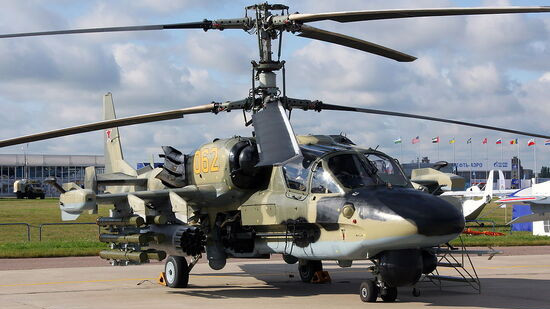
Ka-52 Attack Helicopter
To deal with such threats, Ukraine needs every SHORAD system the West can spare, but it may be forced to deploy its more expensive mid-ranged air defense systems closer to the front lines. For example, the Buk System that can fire the American Sea Sparrow Missile which can strike up to 19km away. The Sea Sparrow is designed specifically to intercept sea-skimming low-altitude targets, making it ideal for taking down low-altitude attack helicopters.
However, placing the Buk System launchers only 4-5km from the front lines will expose them to Russian artillery fire, putting them at considerable risk of loss.
Thus the triad of Russian fixed fortifications works well together.
The mines slow down the advance. The helicopters target and destroy engineering vehicles, stranding Ukrainian assault columns. And the Russian artillery attacks both Ukrainian assault columns and anti-air assets that dare to get within range. North of Tokmak, thus far, this defensive triad has proved extremely formidable.
Note that take away any part of this defensive triad, and the Russian defense becomes considerably less formidable.
Without the mines, Ukrainian forces can more fluidly advance from multiple directions, making them less vulnerable to artillery. MANPAD armed Ukrainian infantry can quietly position themselves to ambush approaching Russian helicopters at various points since the location of Ukraine’s units will be less predictable.
Without helicopters, Russia will have difficulty stopping the slow advance of Ukrainian assault columns.
Without artillery, Russia cannot keep Ukrainian anti-air assets at bay, rendering their helicopters vulnerable.
This is why if Ukraine can just advance about 16km or 10 miles, Ukraine may have a proverbial knife up against Russia’s jugular. Just a 16km advance from Ukraine’s present position would take us here, just past Staromlynivka.
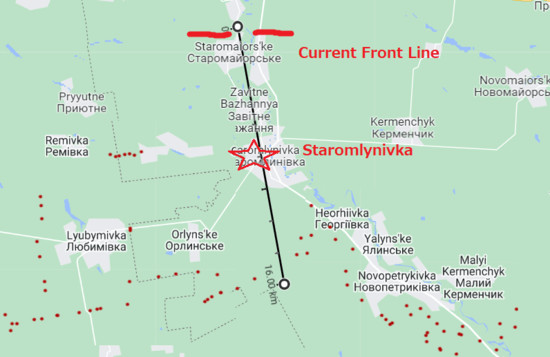
Let us zoom out. There are still a few clusters of Russian defensive positions here and there, but by and large, this is behind the Russian line of fortification.

Consider that Russian positions are not designed to take on an enemy that is advancing on them from behind. Defensive fortifications rarely are. The minefields are in front of most of the defenses, the artillery is behind them. Trench lines are aligned to face threats from forward positions.
What happens if Ukraine advances on one of these positions from behind? The enemy artillery must withdraw to a safe distance, and Russia will need to put a force in between to stop them—it becomes a field battle because the fortifications are worthless once you are behind even a part of it. Ukraine may need to deal with the occasional minefield, but it would be nothing like the static fighting it’s forced into when hitting a fortification line from the front.
Moreover, if Ukraine were to advance south from Staromlynivka, Ukraine wouldn’t be trying to advance over a mountain or a swamp, or any other natural obstacle. These are farm fields dotted with a handful of Russian trenches. aligned into a single layer.
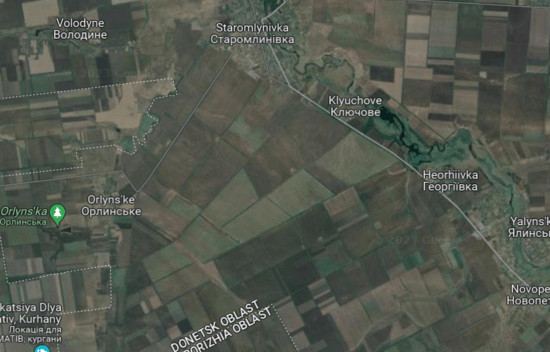
In other words, if Ukraine can advance to Staromlynivka, only a few farm fields and a single line of trenches separate Ukraine from advancing its forces behind the Russian defense line.
The significance of this is hard to overstate.
First, Ukraine has received dozens of all-terrain supply trucks like the A4 HEMTT all-terrain light supply trucks that are capable of going off-road and keeping substantial Ukrainian off-road forces supplied, at least for short distances.
Using this small “behind the lines” force as a pincer, Ukrainian brigades could strike the line of trenches to the east from behind, and gradually advance southeastward along the highway.
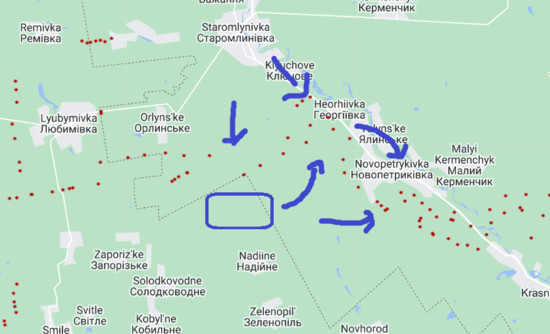
Ukraine could advance on southeast to Zachativka and aim to sever the East-West rail line. Or it could turn west to Polohy.
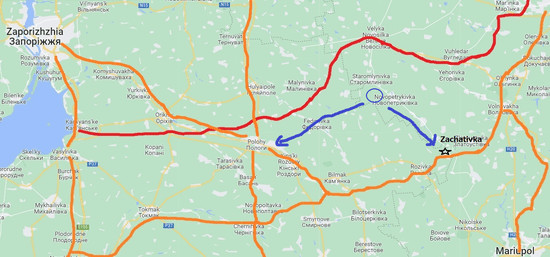
Ukraine could advance west towards Polohy while taking all most of the defenses in-between from behind.
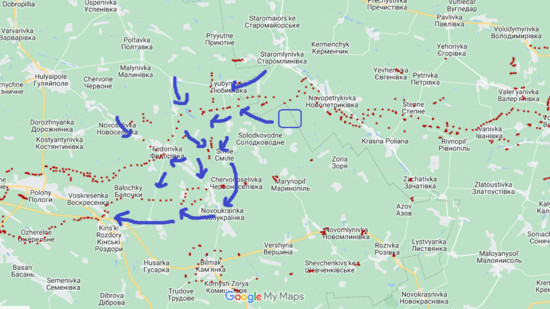
I think that Ukraine has to take Polohy sooner rather than later for logistical reasons, as Ukraine wouldn't otherwise have a railhead into Russian territory. There’s no rail “entry point” into the Russian-held rail system in this area to the east until you get all the way to Donetsk, thus Ukraine breaking through the defenses and heading to Mariupol or sweeping around to take Donbas from the flank doesn’t seem logistically realistic.
Capturing Polohy and Bilmak would give Ukraine a rail network that connects to either Eastern Ukraine or the entire distance south to Berdyansk on the Sea of Azov.
if Ukraine chose to advance on Berdyansk, Ukraine would have cut all rail logistics to the city, and such an attack shouldn’t be difficult to logistically strangle any Russian defense. You could even imagine Ukraine establishing a front to hold against Russian counterattacks to protect that rail line, then advancing along the M14 Highway to Melitopol—bypassing Russia’s defenses north of Tokmak entirely.
You could imagine a longer-term plan something like this.

This is obviously getting way ahead of ourselves.
EVEN IF Ukraine manages to punch through the Russian defense line at Velyka Novosilka, there’s no guarantee of easy Ukrainian advances. Russia will undoubtedly marshal whatever reserves it can mobilize to try to press the Ukrainian forces behind the defensive line again.
Ukraine may need to hold out in a tiny salient against Russian counterattacks on three sides, as Russia throws everything it has in that area at it.
Logistics will be a challenge. Until it captures Polohy, Ukraine will need to contend with an ever-lengthening supply line supported entirely by truck logistics.
But the key thing that should be understood is that Russian defenses are built around the idea of minefields slowing down advances and protecting artillery so they can go to work, and threaten any Ukrainian air defense systems from deploying nearby.
This allows the creation of a “dead zone” of Ukrainian air defense, allowing attack helicopters to slip through and attack Ukrainian columns.
So, what happens if there’s no minefield because Ukraine is attacking a position from behind? The fortification adds little to nothing to Russia. Getting even a small force through the Russian defense line kicks a leg out of the “triad” of Russian fortified defenses, making each component far less effective.
If Russia cannot drive this penetration back and Ukraine can establish freedom of movement of a single brigade behind the main line of Russia's defense, this could be fatal to Russia’s defense. That brigade would allow Ukraine to rip open the wound by taking defenses from behind and establishing a broader base of logistics. They could begin pincering defensive positions all along the front line and tear. The Russian fixed defensive position could fall apart.
Ten miles. Ten miles and one flimsy line of Russian fortifications on some farm fields may be all that separates Ukraine from punching through the Russian defense line.
Ten miles may be all Ukraine needs to make the Russian fortifications essentially turn into the Maginot Line.
